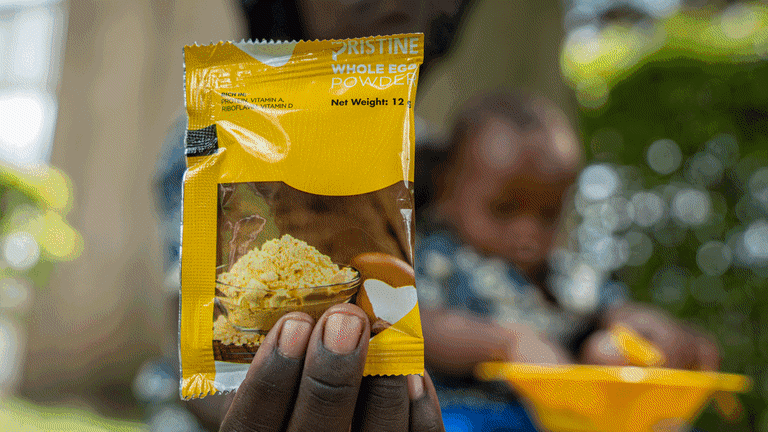
WASHINGTON — Combining severe and moderate acute malnutrition treatments into a simplified protocol is as effective as traditional treatment but costs $123 less per child, according to a new study published in PLOS Medicine.
The “Combined Protocol for Acute Malnutrition Study,” conducted by the International Rescue Committee, Action Against Hunger, and the London School of Hygiene & Tropical Medicine, found that a combined protocol was 76.3% effective at promoting nutritional recovery, slightly better than the standard treatment’s 73.5%. It is the first trial of its kind to use one diagnostic criterion to treat both severe and moderate acute malnutrition.
“This study shows really compelling evidence that we have a better solution in hand right now.”
— Will Moore, executive director, the Eleanor Crook Foundation“We’re combining treatments of both severe and moderate malnutrition in a way that hasn’t been done before. We’re looking to reduce the dosage and really optimize that dosage, but strike the right balance … that could allow millions more children to receive life-saving care,” said Ellyn Yakowenko, associate director of research at Action Against Hunger. “It’ll translate into cost savings, which will directly lead to our ability to expand the support we’re providing to reach more malnourished children.”
Current malnutrition treatment fails to reach 50 million children, or 75% of those acutely malnourished globally. Bailey said this gap was a major incentive for the study, through which researchers hoped to determine how acute malnutrition treatment could be streamlined so it can be scaled more effectively to reach the missing children. More than 3 million child deaths each year are linked to malnutrition.
Researchers conducted a randomized control trial for children aged 6 months to under 5 years in urban Nairobi, Kenya, and a rural, conflict-affected area of South Sudan, in order to test treatment efficacy in diverse contexts. The study was conducted between May 2017 and March 2018, with the participation of over 4,000 children.
Currently, severe acute malnutrition, or SAM, is treated by UNICEF by providing ready-to-use therapeutic foods in outpatient settings. Children must make weekly visits to a health clinic or other facility for treatment, with food amounts determined by child weight. Moderate acute malnutrition, or MAM, is treated by the World Food Programme through ready-to-use supplementary foods or fortified blended flours that are used in bi-weekly feeding programs.
“The current standard approach for treating severe and moderate wasting relies on separate U.N. agencies delivering separate protocols and products, frequently in separate locations,” Will Moore, executive director of the Eleanor Crook Foundation, told Devex via email. “This system is complex and costly, and it puts a tremendous undue burden on the mothers and children who must navigate it to survive.”
5 myths preventing progress in nutrition
"Green food is poor people’s food" and "obesity is not a form of malnutrition" — Devex speaks to nutrition experts about some of the biggest misconceptions that hinder their work.
Both WFP and UNICEF supported the study, which provided either one or two sachets of ready-to-use therapeutic food based on children's mid-upper arm circumference, a method used to measure nutritional status.
“By improving the continuum of care and by providing a protocol that provides for both severe and moderate malnutrition in the same place, at the same time, in a very easy way, can we over time reduce the number of kids who come in severely malnourished?” asked Jeanette Bailey, lead author of the study.
“That would have huge implications on many levels. First and foremost, it’s going to save more lives if we can reduce the incidence of SAM, and it will also impact long-term health.”
Approximately half the children received the combined protocol treatment, while half received standard treatment. There was no difference observed in children who did not respond to treatment, children who missed visits and stopped treatment, children transferred to another facility for more treatment, or children who died.
“We have to be careful because we cannot sacrifice the quality of care or the safety of children in these treatment programs for the sake of efficiency and innovation,” Yakowenko said. “Innovation takes time and it may well be that this is the first step on that innovation trajectory that really helps us advance and push forward.”
There were several additional limitations to the study that require more research, Bailey said. There weren't enough children in South Sudan or Kenya to separate the data into two distinct studies, so the results were analyzed together. The vast majority of the children were between 6 months and 24 months, leaving less confidence the results will hold for older children. More accurate cost estimates are also needed, with the study taking into account the cost of conducting the research and employing extra specialists.
Bailey said the cost could be reduced by streamlining logistics of a single treatment program, which could require employing fewer people to administer it. Increasing effectiveness is also particularly urgent as COVID-19 disrupts food systems and livelihoods globally, with WFP predicting the number of people facing acute food insecurity globally could double due to the pandemic.
“It’s about operationalizing this and testing at a larger scale. I do believe the community-based management of acute management, which is the system we’re building on, was never really tested through multiple randomized control trials, it was testing by scaling it,” Bailey said. “I think that’s really our next step.”
Moore said that additional studies will help determine how and if the combined treatment holds up in different contexts, such as with varying rates of wasting, age of children, and population density. Truly addressing the scale of the problem will also require additional resource mobilization, he said.
“That being said, this study shows really compelling evidence that we have a better solution in hand right now,” Moore said. “Further delays in acting on this growing evidence base would be a detriment to the wasted children around the world who need life-saving treatment today.”








